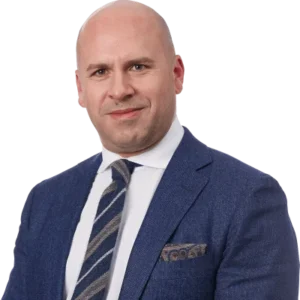Is thoracic surgery expensive in the UK?
Thoracic surgery, like any medical procedure, can vary in cost based on several factors, such as the complexity of the surgery, the specific hospital or clinic, the surgeon’s fees, and other related expenses.
Mr Scarci operates at different hospitals to allow as many patients as possible to benefit from a fast and safe treatment.
The cheapest option would be to be treated at the private wing of NHS Hospitals. The main advantage of this solution is the cost. Moreover, almost all insurance providers will cover admission to such facilities. You will be admitted to a private wing and always sees Mr Scarci and his team throughout your care. You can see this option as the NHS with a boost. Special meals or facilities might not always be guaranteed, and admissions can be occasionally cancelled because of bed pressures on the main NHS Hospital.
Another option is to be treated at one of the leading central London hospitals. Mr Scarci works at the Harley Street Clinic and Bupa Cromwell Hospital. These are both luxurious and offer a wide range of facilities for both patients and carers. The main disadvantage is the cost, as they are much more expensive. Insurance providers usually only cover these hospitals if you paid the central London premium.
Make AppointmentWhat are the pros and cons of private vs. public healthcare options?
Pros of private healthcare:
- Shorter waiting times: Private healthcare typically offers shorter waiting times for appointments, tests, and procedures, allowing patients to receive treatment sooner.
- More choice: With private healthcare, patients have more options when it comes to choosing doctors, specialists, hospitals, and treatment plans.
- Enhanced facilities and technologies: Private healthcare facilities often have state-of-the-art equipment and technology, ensuring patients have access to advanced diagnostic and treatment options.
- Personalized care: Private healthcare providers tend to offer more personalized care, as they can dedicate more time and attention to individual patients.
Cons of private healthcare:
- Cost: Private healthcare is generally more expensive than public healthcare. Patients may need to pay out-of-pocket for consultations, treatments, and medications, which can become financially burdensome, especially for those with limited resources.
- Limited accessibility: Private healthcare may not be accessible to everybody, particularly those with low income or pre-existing medical conditions that result in higher insurance premiums or denial of coverage.
- Fragmentation of care: Private healthcare can result in fragmented care as patients may receive treatments from various providers who lack effective coordination and communication. This is rare anyhow in UK as private providers have adopted a coordinated model of working very similar to the NHS.
Pros of public healthcare:
- Universal access: Public healthcare systems aim to provide healthcare services to all citizens, regardless of income or socioeconomic status. This ensures that everyone has equal access to necessary medical care.
- Lower cost: Public healthcare is typically funded by taxes or government budgets, which helps reduce the financial burden on individuals. This can be especially beneficial for individuals with limited resources or those with chronic health conditions.
- Coordinated care: Public healthcare systems often have centralised record-keeping systems, allowing for better coordination and continuity of care among healthcare providers.
Cons of public healthcare:
- Longer waiting times: Due to high demand, public healthcare systems can have longer waiting times for appointments, tests, and procedures, potentially delaying necessary treatments.
- Limited choice: With public healthcare, patients may have limited options when choosing doctors, specialists, hospitals, or treatment plans.
- Bureaucracy and inefficiency: Public healthcare systems can be bureaucratic, resulting in delays or complications when accessing or coordinating care.
- Potential quality issues: Public healthcare may face challenges in maintaining quality standards due to budget constraints, leading to variations in the quality of care provided.
How can I finance my private Lung Cancer treatment?
There are two ways to pay for your care: self-funding or private medical insurance.
If you want to claim your insurance, you must call them before obtaining treatment and get an authorisation code. This is very important as your treatment won’t be paid otherwise, and you will be liable for its cost. Your insurance will likely ask for a GP referral. Luckily, most insurance providers have easy-access GPs capable of making the referral. If you have an excess, you must pay it directly to the care-provider.
Equally, if you choose a non-fee-assured consultant or a hospital that is not on your list, you will be liable for the cost. Fee-assured means that the consultant/hospital will bill within the agreed schedule published by the insurance, and you won’t receive an additional invoice beyond your policy excess.
Mr Scarci is fee-assured with all insurance providers. You can check the status of your consultant on the insurance client’s website. Similarly, you can check whether your policy covers the hospital facility.
One important point is that you cannot take out insurance and expect it to pay when diagnosed with a medical problem. Also, your insurance won’t pay, usually for chronic conditions such as asthma, diabetes, COPD, etc. You can imagine private medical insurance as a policy that deals with sudden events.
Be mindful that if you claim on your insurance, your premium is likely to increase the following year, so for consultations and small value claims, it might be more cost-effective if you are paying for your insurance yourself and not through work to self-fund treatments.
Another way to find treatment is by paying for it directly. This seems obvious, although there are several things to consider. As the insurance’s schedule does not bind your surgeon, he/she is free to ask whatever is considered appropriate. Few surgeons tend to abuse this freedom, so shop around to make sure you get the best deal. A good rule of thumb is roughly no more than 2-3 times the insurance rate. This can be easily found on the internet with the CCSD (codes that describe your operation) provided by your surgeon.
In an effort to allow as many patients as possible to get private treatment, Mr Scarci has invested heavily to partner with a finance broker, and he can offer a package tailored to your needs. Kandoo is a regulated credit broker who will search to find you the best thoracic surgery finance plan that’s right for you.
To get started and request finance for thoracic surgery, you can complete a simple form online. Once you have submitted your application, Kandoo will review your request and if successful, the money will be paid directly into your account in just 48 hours. If Kandoo requires any further information from you to assess your application, they will get in touch and aim to resolve the matter as soon as possible and help you on your way.
Mr Scarci decided to develop this relationship with a trusted partner and has invested in order to provide a reputable option to his patients. Mr Scarci does not receive any fees or incentives from Kandoo.
If you would like to be considered for financing, simply complete the form on our website and the team at Kandoo will do the rest.
You can get more info here: https://marcoscarci.co.uk/finance-options
thoracic surgery thoracic surgery thoracic surgery thoracic surgery thoracic surgery thoracic surgery thoracic surgery thoracic surgery









